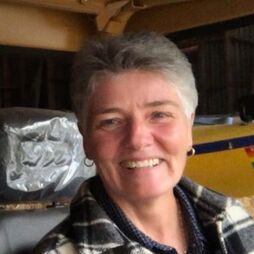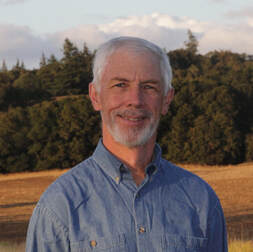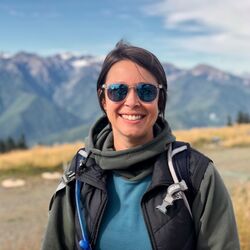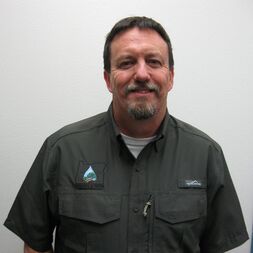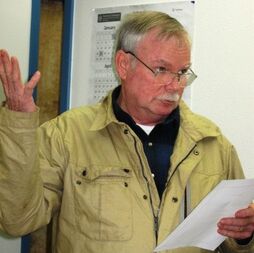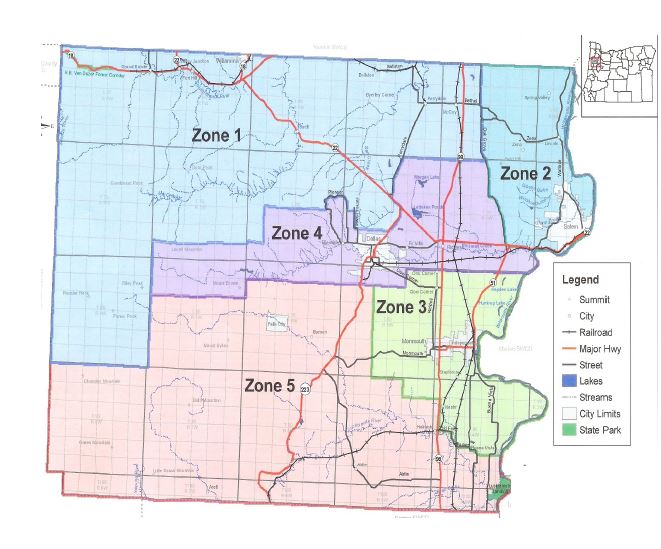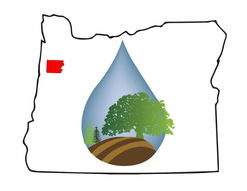The Polk Soil and Water Conservation District (Polk SWCD) is a subdivision of state government administered by seven locally elected directors. Each director serves the board without pay for a four-year term. The body of the board is made up of five landowners from different county zones and two at-large directors who represent the entire county. This effective board works cooperatively to plan and oversee the implementation of the conservation district’s programs. As representatives of the conservation district board, opinions expressed publicly by individual directors are consistent with established board policy, regardless of the individual’s personal agenda or opinions. Directors meet monthly to administer the business of the SWCD. Each director donates their time and service on behalf of the residents of Polk County and its natural resources.
|
get to know Pryor
Pryor grows certified organic grains (wheat, rye, triticale, barley, etc.) on a 92 acre farm near Sheridan, where the Willamette Valley floor begins to rise into the foothills of the Coast Range. He began farming in 2016 after retiring from practicing patent law, and was elected as Zone 1 director of the Polk Soil and Water Conservation District in 2020. He also chairs the policy committee of the national Organic Farmers Association, which advocates nationally on behalf of certified organic farmers. He believes that a farm's soil is its most important asset, and that as the climate warms and Oregon's population increases, protecting and restoring Willamette Valley farmland is critically important. Garnetts Red Prairie Farm relies on cover cropping, residue retention, minimum tillage, crop rotation and erosion prevention to build soil fertility and resilience. It is a 2017 Flagship Farm of the Oregon Bee Project, and has 3/4 mile of pollinator-friendly hedgerows as well as extensive Oregon white oak woods and a year-round creek. |
|
|
|
Conservation District Board Responsibilities:
In order to effectively exercise the powers and authorities as stated in ORS 568, conservation district boards:
|
associate and directors emeriti
|
ASSOCIATE DIRECTORS: Conservation districts can expand conservation district capabilities by appointing associate directors. Associate directors do not vote on board decisions. However, they can augment the board’s knowledge and experience level and assist with conservation district programs and activities. Associate directors, once officially appointed by the conservation district board, are covered by the same Tort Liability Insurance as the directors while doing conservation district work.
An associate director serves until January 1 of odd numbered years. Every two years conservation district boards should select individuals they wish to appoint or reappoint to associate director positions. An associate director may be appointed to a vacant position or elected to a position if they meet the statutory requirements for director eligibility. |
DIRECTORS EMERITI: Conservation districts can expand conservation district capabilities by appointing director emeriti. Director emeriti do not vote on board decisions. However, they can augment the board’s knowledge and experience level and assist with conservation district programs and activities.
Director emeriti is an appointed position with a conservation district. The position is reserved for a person who previously served as a conservation district director in the United States or its territories where conservation districts exist. A director emeritus does not vote when the board makes an official decision. A director emeritus serves until January 1 in odd numbered years. Every two years conservation district boards should select individuals they wish to reappoint as directors emeritus. |

